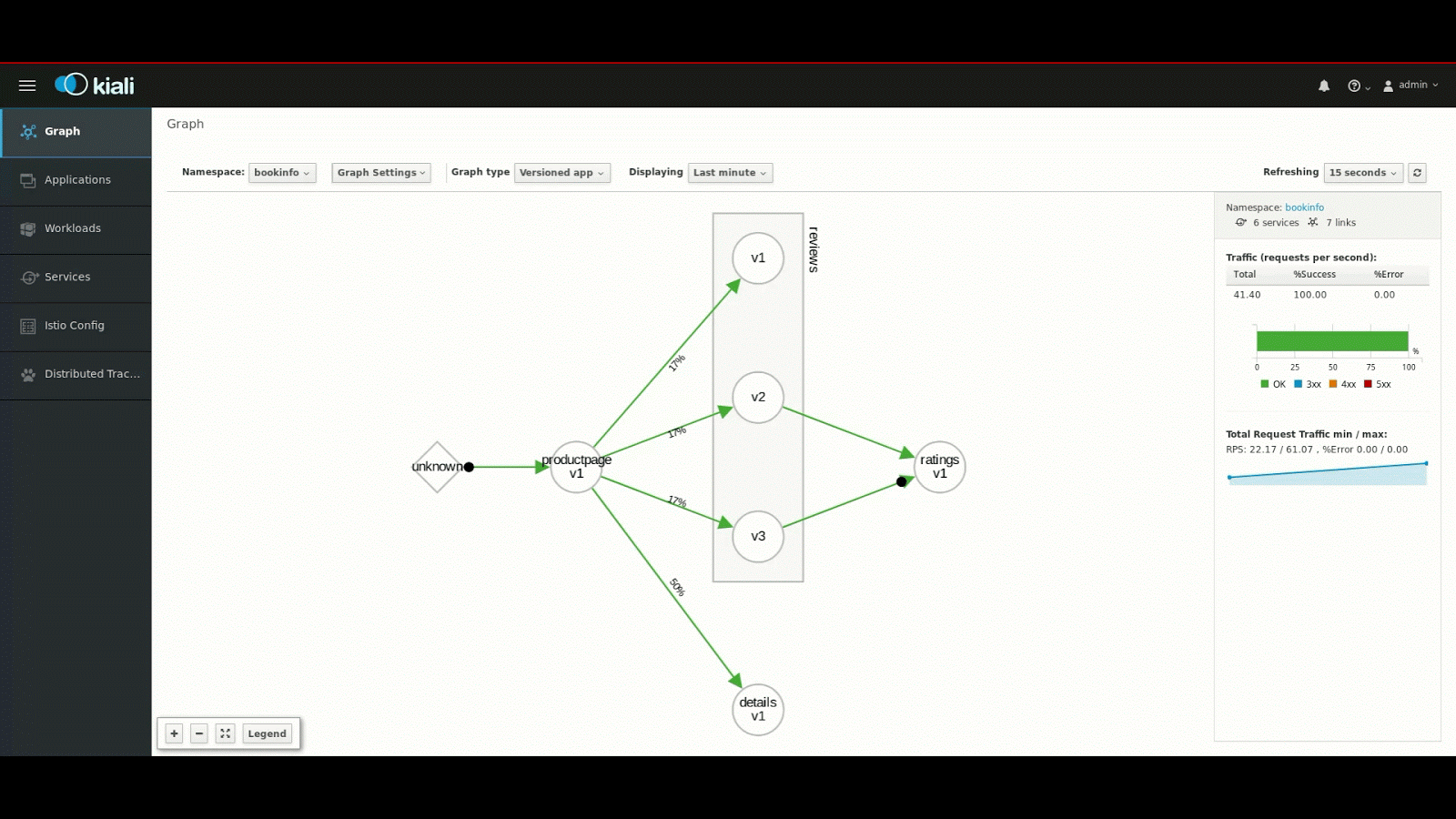It’s been a few weeks since the release of the first tech preview of Istio on OpenShift. Since then a lot has happened, and we are happy to announce the availability of our second tech preview release.
In this release we are adding a whole new user interface from the upstream Kiali project. The Kiali user interface can help Istio users understand what’s happening in their service mesh, canl show how the various components are connected, and can help to detect issues (HTTP 500, pod not started, misconfigurations) to better fix those.
Here are some of the core features of Kiali:
- Collect health information: Kiali will display the health of services and inter-service requests. For example, Kiali will aggregate health data from Kubernetes (Pod health) as well as from Istio Mixer (error rates below a threshold).

- Service mesh visualization: A graph displays how the various components of the mesh are related/connected. The service mesh graph offers many configuration options to customize the data displayed. One can choose how service versions are displayed, choose to display the number of requests over time, or the request’s time (how long the request took by average or percentiles) between two components.
An animated graph helps provide a more natural way to visualize both the inter-component request latency (speed of the dots) and the amount of traffic between two components (number of dots). An example service graph is shown below.

- Configuration validation (Configuration editing is planned for a future release): It can be error prone to write Istio configuration, Kiali can help finding out some common errors, in future releases, Kiali plans to complement Istio Galley.

A Kiali tutorial is available in the OpenShift Service Mesh installation guide. The guide will not only provide you with information on Kiali, but will also help you to install the whole Service Mesh suite, including Jaeger for distributed tracing and Grafana (for deeper metrics analysis), on an existing OpenShift 3.10 (or later) cluster.
Kiali is a project originally started by Red Hat engineers who are also contributing to Istio. Starting from the 1.1 release of Istio, Kiali is expected to become the default visualization console. Kiali is in a very active/rapid state of development, and the upstream community will be happy to get feedback and contributions.
Red Hat’s aim is to regularly release Tech Preview drops over the coming months. Stay tuned, and be sure to provide us with your feedback on OpenShift Service Mesh - we want to take your comments into account!
執筆者紹介
チャンネル別に見る
自動化
テクノロジー、チームおよび環境に関する IT 自動化の最新情報
AI (人工知能)
お客様が AI ワークロードをどこでも自由に実行することを可能にするプラットフォームについてのアップデート
オープン・ハイブリッドクラウド
ハイブリッドクラウドで柔軟に未来を築く方法をご確認ください。
セキュリティ
環境やテクノロジー全体に及ぶリスクを軽減する方法に関する最新情報
エッジコンピューティング
エッジでの運用を単純化するプラットフォームのアップデート
インフラストラクチャ
世界有数のエンタープライズ向け Linux プラットフォームの最新情報
アプリケーション
アプリケーションの最も困難な課題に対する Red Hat ソリューションの詳細
オリジナル番組
エンタープライズ向けテクノロジーのメーカーやリーダーによるストーリー
製品
ツール
試用、購入、販売
コミュニケーション
Red Hat について
エンタープライズ・オープンソース・ソリューションのプロバイダーとして世界をリードする Red Hat は、Linux、クラウド、コンテナ、Kubernetes などのテクノロジーを提供しています。Red Hat は強化されたソリューションを提供し、コアデータセンターからネットワークエッジまで、企業が複数のプラットフォームおよび環境間で容易に運用できるようにしています。
言語を選択してください
Red Hat legal and privacy links
- Red Hat について
- 採用情報
- イベント
- 各国のオフィス
- Red Hat へのお問い合わせ
- Red Hat ブログ
- ダイバーシティ、エクイティ、およびインクルージョン
- Cool Stuff Store
- Red Hat Summit

